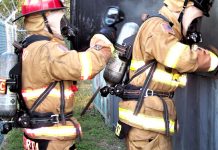
Nothing beats the flavour of tender smoked brisket, pulled pork, or ribs. However, it’s difficult to get decent results when smoking meat, especially for people who are new to this style of cooking. Perfecting this method takes a lot of practice, as well as proper equipment.
If you enjoy a cold beer and freshly cooked meat as much as I do, let me share with you how to smoke your meat like a pro. Here are several useful tips that I’ve compiled over the year.
First Things First – Select the Right Outdoor Smoker
Selecting a suitable smoker is the first step to achieving perfectly smoked meat. These appliances come in a wide range of designs, sizes, and fuel types. They’re quite versatile, durable, and convenient for use. However, every model has its unique pros and cons. Below I will explain the 5 most popular types so that you can choose the one that’s most suitable for you.

What are the Different Types of Smokers?
-Charcoal: These are tall and narrow, containing two cooking chambers. The temperature is controlled by dampers on the lid and base, which also regulate how much oxygen reaches the charcoal in the pan below. These appliances create excellent smoky flavours as well as that famous smoke ring and crust. However, they require constant monitoring to maintain a consistent cooking temperature.
-Electric: These have a vertical design and normally accommodate three to five food racks. The firebox heats up the meat with an electric heating element. Above this element, there’s a water dish that provides humidity to the firebox. This type is ideal for beginners since it’s the easiest to use. All you have to do is fill it up, set the thermostat to the proper temperature, and take the meat out after 6-8 hours.
-Gas/Propane: Electric and gas smokers are similar to one another, with the exception that the latter uses a gas burner to provide heat. The burner is placed at the bottom, the cooking chamber is in the top half, and the middle area features a dish for water and a tray for wood chips. This type has the benefit of allowing the operator to precisely control the temperature.
-Pellet: These appliances have a pellet igniter beneath the cooking chamber that’s slowly fed pellets. When the pellets are ignited, they create heat and smoke. A pellet grill mostly self-maintains the temperature in the cooking chamber, so there’s no need to constantly check it. They provide a smoky flavour, but you don’t have the same crust and smoke ring as charcoal.

-Offset: These are ideal for experienced pros, as they’re much harder to keep at a constant temperature. An offset smoker is excellent for cooking a large quantity of meat, and it’s one of the best ways to give the meat a smoky taste.
Selecting Meat
The type of meat that you will be smoking is entirely up to your preference. The most popular meats are hog shoulder, brisket, and ribs. But don’t limit yourself to the options I mentioned – you can also smoke whole poultry and fish, cheese, nuts, prime rib, leg of lamb, or lamb shoulder. The art of smoking has developed around the tough portions of meat that often don’t cook well using any other technique, such as brisket, which is difficult to eat unless smoked slowly at a low temperature.
How to Control the Temperature?
So, you filled up your smoker grill and turned it on. Now you’re enjoying a cold one in your backyard chill zone. While smoking meat doesn’t require you to constantly monitor your meat, you still need to control the temperature from time to time. The ideal temperature for smoking meat is 90-105 degrees, while in some cases you can even go lower.
Keeping the temperature low is good for two reasons: first, to give the smoke time to penetrate the meat, and second, to naturally tenderize the flesh. When you’re smoking, it’s ideal to have two precise thermometers: one inside the smoker BBQ grill, near where the meat is placed, and the other inserted within the meat, to measure the interior temperature of the food you are smoking.

Moisture Maintenance
You must ensure that your appliance is steaming and not only smoking. One of the most important aspects of smoking is to keep the water pan filled. You will need to refill the water dish several times while smoking if your appliance is larger.
It will help to keep the meat moist to add a marinade before cooking or a sauce while the meat is smoking, but this is entirely up to you.
How Long Should You Cook?
The type of meat you’re cooking, the thickness of the flesh, and the temperature of the appliance are the three things that you need to consider when deciding on the smoking time. The average meat needs around 6-8 hours to smoke, however, brisket may take 22 hours to cook.
There are certain chefs that adhere to the “3-2-1 rule” when smoking. For the inside of the meat to fully cook, it’s first smoked for three hours before being covered in aluminium foil for the next two hours. In order to give the meat’s surface a crisp finish, take the foil off for the last hour of cooking.
The perfectly cooked meat should have a pink ring (which is the nitric acid) surrounding it, just within the outer, darker layer. Now that you have the necessary knowledge – go out there and smoke your delicacies while enjoying the greenery of your garden!















